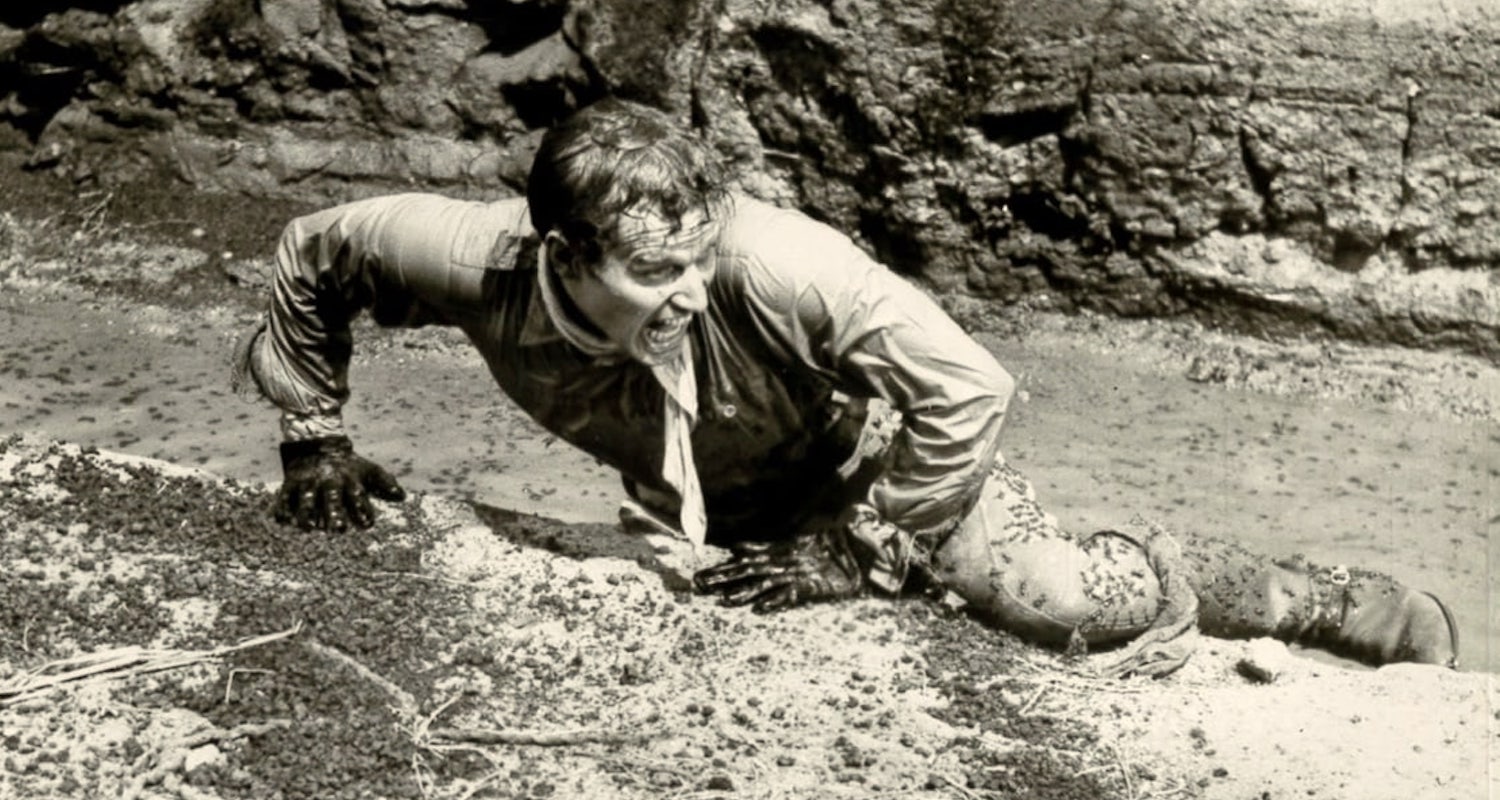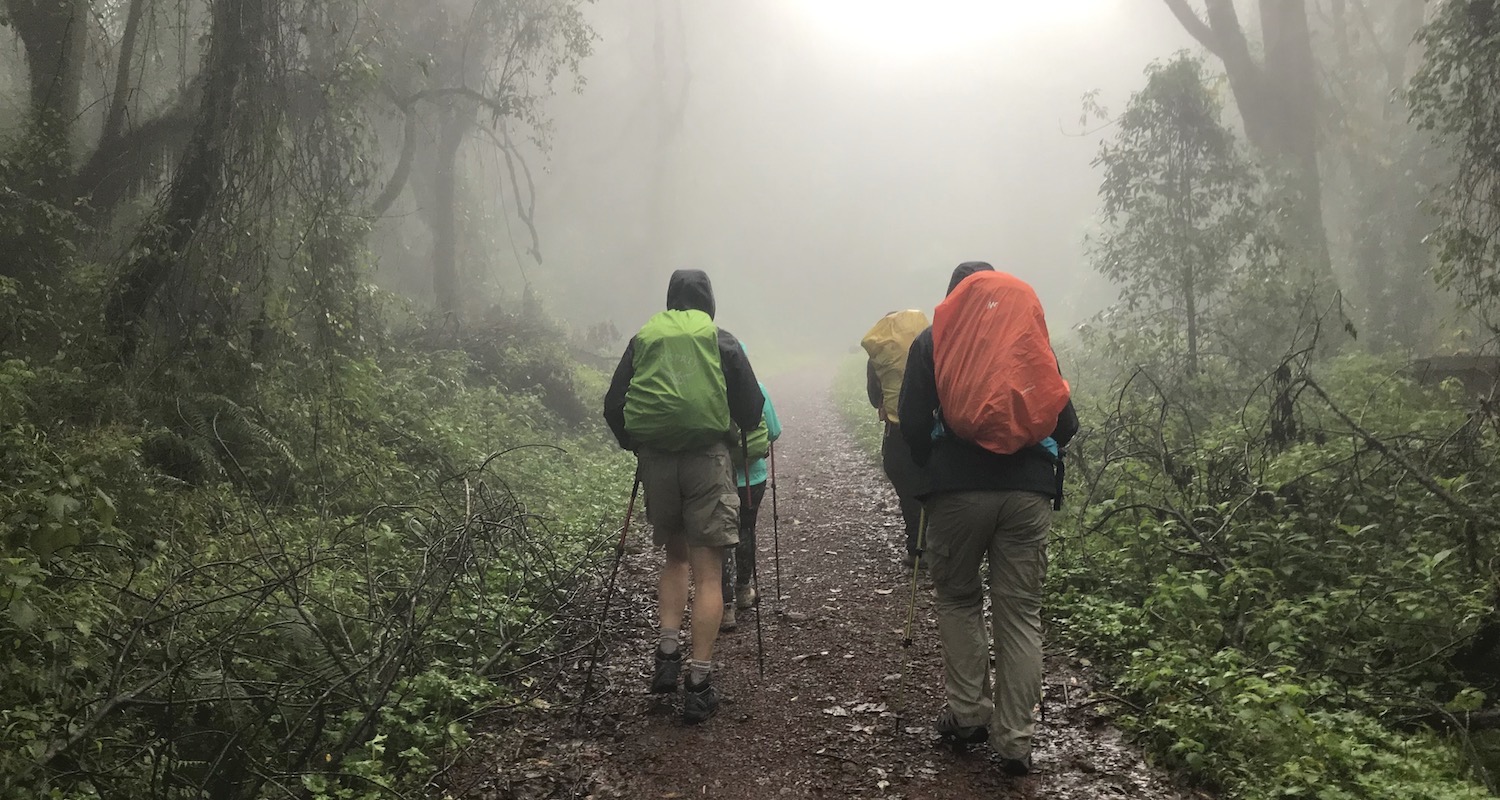"Leiningen!" he shouted. "You're insane! They're not creatures you can fight--they're an elemental--an 'act of God!' Ten miles long, two miles wide--ants, nothing but ants! And every single one of them a fiend from hell; before you can spit three times they'll eat a full-grown buffalo to the bones. I tell you if you don't clear out at once there'll he nothing left of you but a skeleton picked as clean as your own plantation."
From Stephenson’s “Leiningen Versus the Ants”
Carl Stephenson is the champion of the malevolent insekt story. His yarn, “Leiningen Versus the Ants,” places a stubborn coffee farmer in the path of a horrific plague of ants. The battle that follows pits human wit against the unstoppable force of nature. The no-nonsense Leiningen bets the farm on his intelligence.
The short story was translated from the German and published by Esquire magazine in 1938. It proved to be a one-hit wonder for Stephenson. Reprinted in numerous anthologies, it is now available online.* If you are unfamiliar with the story (or haven’t read it since that literature class in high school), you should do it as soon as you finish this blog. It is a classic.
Hollywood couldn’t resist retelling the tale. A romantic twist was added (by way of Leiningen’s mail-order bride) and the prose was adapted for a film presentation. With Charlton Heston as star and state-of-the-art special effects (from 1954) to thrill, Paramount presented it under the title The Naked Jungle.
A dashing Charlton Heston stars as Leiningen in The Naked Jungle (1954). If he doesn’t dash a little faster, he will be eaten! Image found at https://www.listal.com/viewimage/9481997h (accessed 3 Aug 2019).
A second—and more distant—echo of Stephenson’s short story is heard in Indiana Jones and the Kingdom of the Crystal Skull (2008). Here, as in all of Indy’s movies, some creepy-crawlies appear. In this version, however, several nefarious characters are carried off and eaten alive (screaming, of course) by swarming ants.
Somehow the crystal skull keeps the killer ants at bay. Image captured from the clip posted at https://www.youtube.com/watch?v=u31doByO_lU (accessed 3 Aug 2019).
Given Stephenson’s penchant for non-fiction writing, it is odd that while “Leiningen Versus the Ants” succeeds as a literary piece, it has a few biological . . . bugaboos. Joe Ballenger takes on some of these myths on his website Ask an Entomologist.** Let me distill just two.
First, unless you are a totally immobilized or a really small person—like insect-sized small—, it is unlikely that you would be consumed by swarming ants. And (if this helps the nightmare) even if you were, it would take days or weeks to be reduced to a polished skeleton. Stephenson takes liberties when describing the pampas stag that is dragged down by the ants and consumed within six minutes on the spot. It is a nice literary touch, however, when Leiningen stumbles at the end and has a vision of the stag.
Second, as this story takes place in South America the most likely candidate for the ant species is Eciton burchellii. Stephenson’s description of the insects as “thumb-sized” is clearly an exaggeration, as is their movement in waves, and their voracious appetite for anything and everything. E. burchellii attack and gobble other small living creatures for food (like insects and lizards). Plants are not in their diet. Nor are people.
Eciton burchellii. Note the large scissor-like mandible. The soldier ant can grow up to 1/2-inch in length. Image from https://wellcomecollection.org/works/z9ujqwum/items?sierraId= (accessed 3 Aug 2019).
Like Stephenson’s short story, the Indiana Jones ant scene takes place in the New World. Unlike Leiningen, Indy does identify the antagonist. At one point he screams, “Siafu!” (and then as if a translation is needed) “Big damn ants. Run!”
At this point we must grant Indy some liberties also. He is supposed to be an archaeologist, not an entomologist. If he were the latter he would know that siafu ants (members of the genus Dorylus and commonly called “safari ants” or “driver ants”) do not appear in the New World, but rather, are an African species. Siafu, after all, comes from the Swahili tongue.
Like their American cousins, the siafu swarm in massive numbers, eat animal protein, and have dedicated soldiers with serious pincer-style mandibles. They are are largest of all ant species; a queen can reach two inches in length. They will attack anything that is perceived as a threat and have a bite that can penetrate human skin. In fact, it is said that these ants can be used in the field as emergency sutures to close a wound. Once the mandible is set, the insect’s thorax and abdomen may be twisted off and the dead head will not release its grip. The siafu is a mobile staple gun.
This mandibles of this safari ant are causing some serious pain here! Image from https://www.wildlifearchives.com/pin/6687/ (accessed 2 Aug 2019).
Now in case you are wondering what has provoked my interest in carnivorous ants, let me tell you. His name is Mohammad and he is my friend. We have been tent-mates while hiking Kilimanjaro in East Africa.
It just so happened that one day as we were hiking through the rainforest of the mountain’s lower flank that Mohammad stopped for a drink of water. Pausing along the muddy track he pulled out his water bottle and took a swig. I continued up the trail.
Hiking through the mist and mud of Kilimanjaro’s rainforest.
Mohammad recalls: “I just stopped for a minute. Something bit me on the ankle. I looked down and my shoes were covered with ants.”
“The guides tried to get me to move and told me to start taking off my clothes. I thought Why? It’s just an ant. But then they all started biting.”
I heard the odd commotion and came back. At this point Mohammad was down to his underwear, doing an odd dance, and the guides were slapping the ants off his body.
Again Mohammad’s words: “They were very hard to kill. I saw one between my toes. The body was squashed but the head was still trying to bite!”
There was nothing funny about it in the moment, but afterwards we all had a good laugh.
“Ants in your pants!”
Ambrose, our Tanzanian guide shook his head. “Safari ants. When they move, they move in a queue. He must have stopped right on it.”
Well, at least he wasn’t carried off by the swarm and reduced to a polished skeleton.
Mohammad does a happy dance. No ants in the pants here, he’s just happy to be out of the rainforest.
*Carl Stephenson, “Leiningen Versus the Ants.” Originally published in Esquire (December, 1938): 98-99, 235-241. You may read this story online here.
**Joe Ballenger, “Is there any truth to the rumor that ants eat cows, people and crops?” Posted on July 1, 2015 on the website Ask an Entomologist. See here https://askentomologists.com/2015/07/01/is-there-any-truth-to-the-rumor-that-ants-eat-cows-people-and-crops/ (accessed 3 Aug 2019).
Mohammad and Raymond scramble on Kili’s famous Barranco Wall.
I love Africa but my regular summer work is in Israel-Palestine.
If you are a pastor, church leader, or educator who is interested in leading a trip to the lands of the Bible, let me hear from you. I partner with faith-based groups to craft and deliver academic experiences. Leaders receive the same perks that other agencies offer, at competitive prices, and without the self-serving interests that often derail pilgrim priorities.
See here for a list of future trips.







